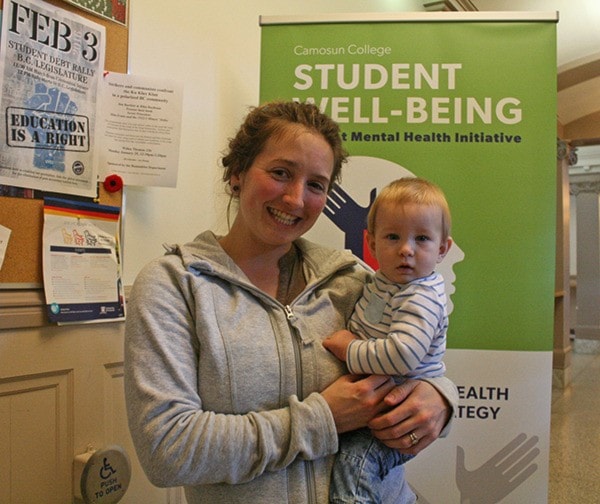With the launch of a new five-year strategy, Camosun College counsellor Chris Balmer is hoping the students, staff and faculty will better embrace a responsibility for the general mental health and well-being of anyone on campus.
The new Student Mental Health and Well-Being Strategy is a first for Camosun and was released last week with a ceremony in the Young building of the Lansdowne campus. Counselling and supportive services aren’t new at Camosun, but the ideas within the five-year action plan are, said Balmer, the lead on the strategy.
“We are seeing more students at Camosun with mental health issues that are more frequent, complex and severe, and like most colleges and universities, our student services are strained and overextended,” Balmer said. “The idea of a five-year plan is that once we have identified the actions that need to be taken, we’ll need time to collaborate with the stakeholders at the college to make it happen.”
The goal is to start over again in five years with a new strategy, built on the success of this one. Health statistics show high levels of student distress in Canadian colleges and universities, creating a demand for the strategy.
“We’re not just expanding services, per se, such as our services for mental health,” Balmer said, “the expansion is in the area of ideas, being able to have the other schools within the college incorporate awareness and responsibility for mental health and well-being.”
Julia Woensdregt graduated as an athletic therapist from Camosun in 2014. She spoke during the launch as a reminder of the stigmas still attached to mental health.
“I don’t know if I was ‘in need’ of mental health support but the college does a good job of making everyone aware of the support, and I used the counselling services available to me about three or four times in my last years at school,” Woensdregt said. “I think of it as an annual checkup, it makes sense.”
One of the strategies Balmer is working on is a big-picture look at each semester’s deadlines, when students hit a bottleneck of exams, tests and assignments all due at once.
“We will take a close, hard look at how [instructors] schedule assignments and exams, and how the system inadvertently adds stress when we’re asking students to put their best foot forward academically,” Balmer said.
“What we’re realizing is universities and colleges are so regimented we’ve built in barriers by insisting these things all happen in the same time frame, so I’m hoping to build in more flexibility regarding deadlines so we don’t build in systemic stress in the planning.”
It means systematically meeting with Camosun’s curriculum committee that approve all curriculum packages, and asking them to use a mental health lens during planning.
Those discussions are just starting now.
Another example is the expansion of in-class activities such as short visualization or relaxation exercises, and informational sessions about ensuring a healthy lifestyle throughout the student year by getting the right sleep, nutrition, exercise and support when needed.
“There are some instructors already using mindfulness meditation exercises, but overall it will be new to have the activities in class,” Balmer said.
The long-term goals are to enhance student well-being at Camosun through mental health literacy, promotion and resiliency strategies, creating health promoting policies, responsive mental health services and potentially designing spaces that encourage connection and positive student engagement.
The strategy is online at camosun.ca/about/mental-health/index.html.
reporter@saanichnews.com
